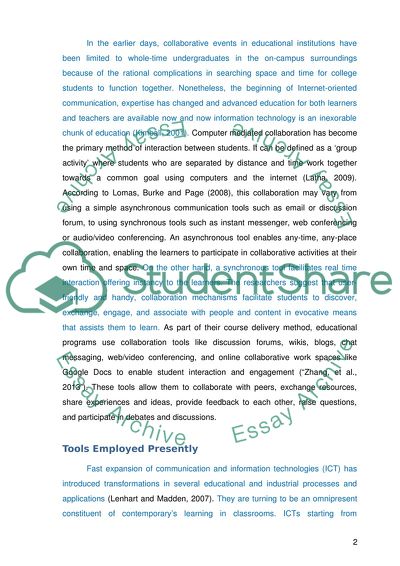Cite this document
(Development of Student Collaboration and Communication Platform Literature review Example | Topics and Well Written Essays - 4000 words, n.d.)
Development of Student Collaboration and Communication Platform Literature review Example | Topics and Well Written Essays - 4000 words. https://studentshare.org/information-technology/1877107-development-of-student-collaboration-communication-platform-literature-review
Development of Student Collaboration and Communication Platform Literature review Example | Topics and Well Written Essays - 4000 words. https://studentshare.org/information-technology/1877107-development-of-student-collaboration-communication-platform-literature-review
(Development of Student Collaboration and Communication Platform Literature Review Example | Topics and Well Written Essays - 4000 Words)
Development of Student Collaboration and Communication Platform Literature Review Example | Topics and Well Written Essays - 4000 Words. https://studentshare.org/information-technology/1877107-development-of-student-collaboration-communication-platform-literature-review.
Development of Student Collaboration and Communication Platform Literature Review Example | Topics and Well Written Essays - 4000 Words. https://studentshare.org/information-technology/1877107-development-of-student-collaboration-communication-platform-literature-review.
“Development of Student Collaboration and Communication Platform Literature Review Example | Topics and Well Written Essays - 4000 Words”. https://studentshare.org/information-technology/1877107-development-of-student-collaboration-communication-platform-literature-review.


